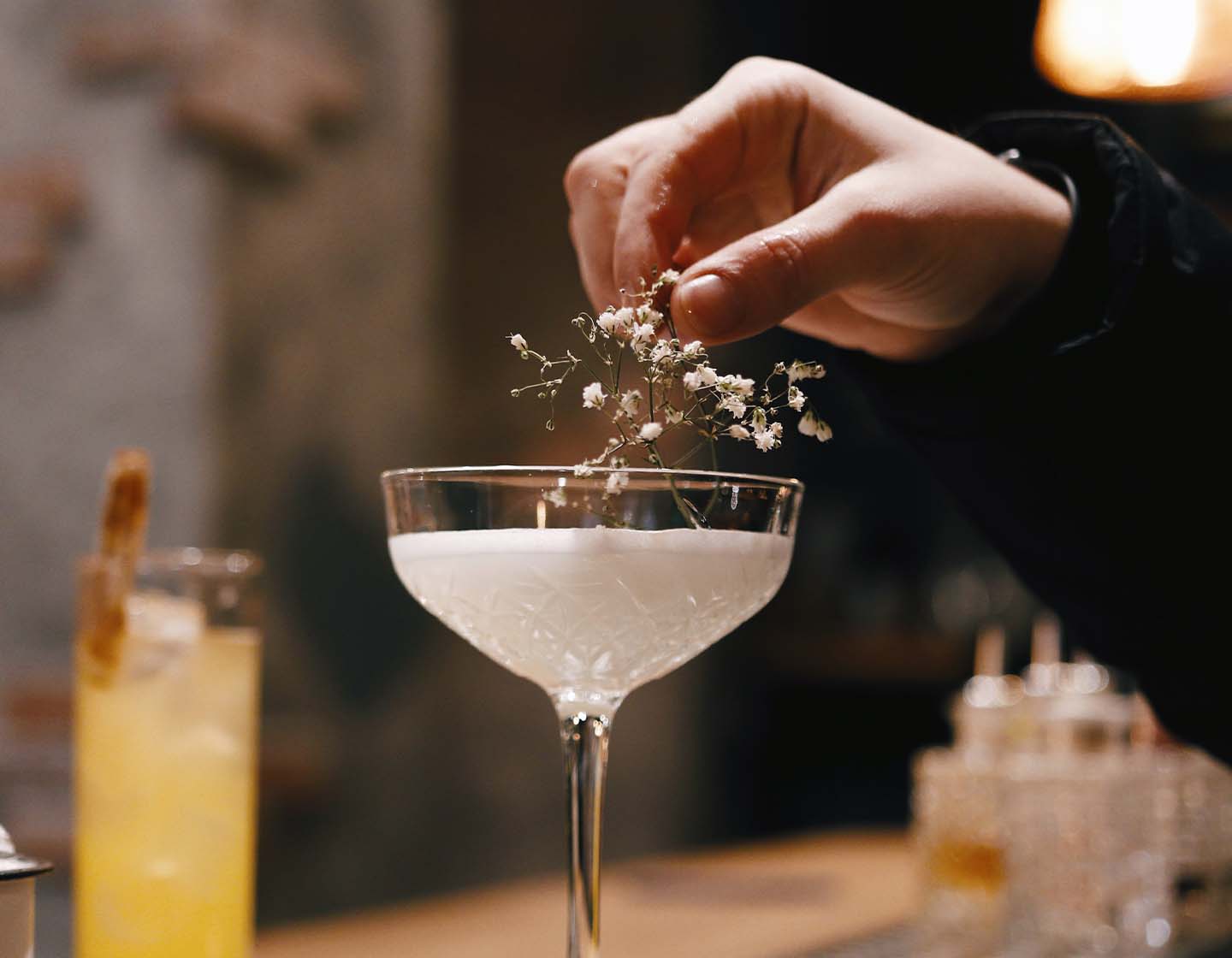
An Essential Guide to Cocktail Garnishes
Explore the art of cocktail garnishing, from citrus twists to edible flowers, and learn how to elevate the drink's appearance, aroma, and flavor.
Estimated Reading Time: 3 Minutes
In the world of cocktails, appearance is nearly as essential as taste. A drink’s garnish doesn't just sit idly atop or alongside the beverage—it elevates, complements, and completes the story the cocktail conveys. As we delve into the art of cocktail garnishing, we'll explore its multifaceted roles in aesthetics, flavor, and aroma, turning an ordinary drink into a sensory delight.
A Brief Glimpse at Garnishing
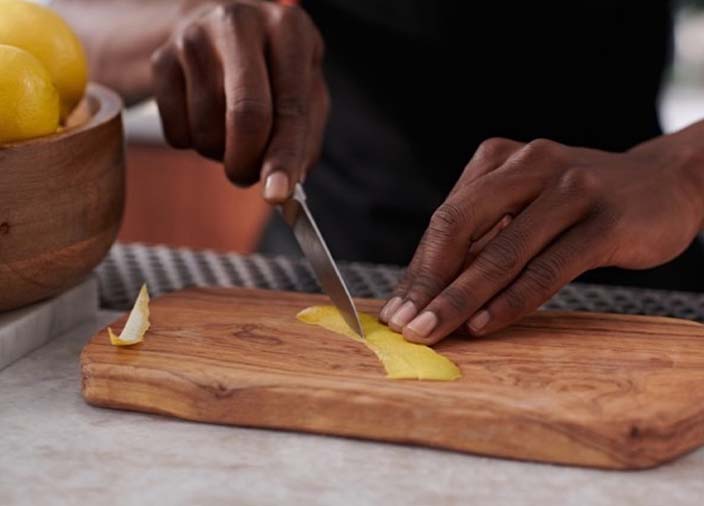
A Brief Glimpse at Garnishing
Historically, garnishes began as simple accompaniments to enhance a drink's appeal. Over time, as mixology evolved into an art form, garnishes transformed from mere decorative elements to integral components, bridging the gap between a drink's visual allure and aromatic and flavor profiles.
Citrus: Whether a wheel, twist, wedge, or zest, citrus garnishes, including lemons, limes, oranges, and grapefruits, add a refreshing aroma and hint of flavor. A citrus twist, in particular, can release essential oils, enhancing the drink’s olfactory experience.
Herbs: Mint sprigs, basil leaves, or rosemary stems infuse drinks with a subtle scent, complementing or contrasting the cocktail’s primary flavors. They often find their way atop mojitos, juleps, and other herb-centric beverages.
Berries and Fruits: From a simple cherry in a classic Manhattan to a skewer of mixed berries, fruits provide color, texture, and taste.
Edible Flowers: Not only do they add a burst of color, but edible flowers like violets, roses, and hibiscus can also impart delicate flavors and aromas.
Rims: Salted, sugared, or spiced, a well-dressed rim can change the entire profile of a drink, adding texture and flavors with each sip.
Other Accents: Think olives in martinis, onions in Gibsons, or a smoky bacon strip in a Bloody Mary. These garnishes can be as traditional or avant-garde as the drink and occasion demands.
Techniques to Perfect the Garnish
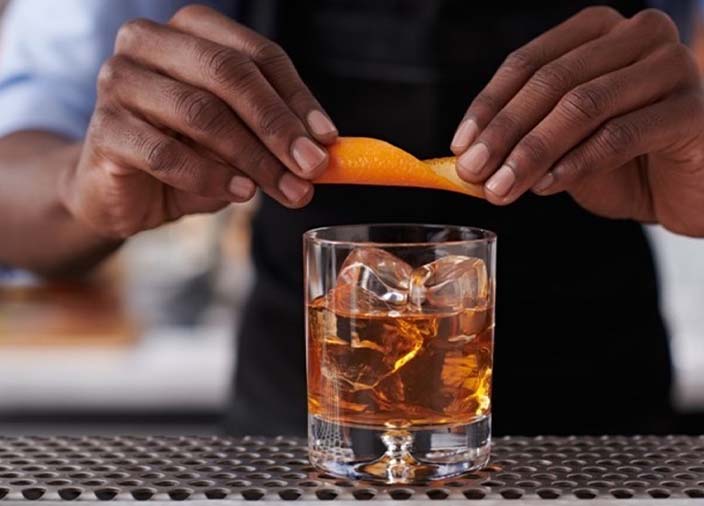
Techniques to Perfect the Garnish
Twisting Citrus: When creating a citrus twist, it's essential to ensure minimal pith (the white part) is attached, which can introduce bitterness.
Bruising Herbs: Gently slapping or muddling herbs like mint releases their oils, making their aroma more pronounced without overpowering the drink.
Rimming the Glass: To achieve an even rim, use a citrus wedge to wet the glass's edge, then roll or dip it in your choice of salt, sugar, or spice.
How to Make Garnishes
When crafting your garnish fruits, a sharper knife is easier to use and is safer than blunt blades, so having a good sharpening tool at hand is essential to ensure that utensils are always ready for use.
Using suitable knives correctly makes your job easier. In your venue, you should have the following:
A small knife – Use for slicing, taking the ends off citrus fruits, and dealing with softer fruits that are more likely to bruise.
A large knife – Works best for large fruits, such as pineapples or grapefruits.
Peeler or channel knife – Perfect for quick, easy citrus twists and more exotic garnishes.
A chopping board – Good quality, washable, toughened plastic works best.
How to Cut Garnish Citrus Fruits
Use a clean, dry knife and chopping board.
Wash the fruit.
Chop off the ends.
Cut in half and remove the pith at the core.
Slice into wedges: Lime, 6 wedges / Lemon, 8 wedges / Orange, 16 wedges.
How to Cut a Twist
Cut using a peeler or channel knife.
The peel needs to be long enough to tie or to twist and curl.
It's best to start the twist at the fruit's stem.
Cut in a spiral, not a straight line - use your knife to go around the fruit in a spiral.
A tight spiral gives you a tight curl and a wide spiral creates a bigger, looser curl.
Watch Video:
5 Garnish Best Practices
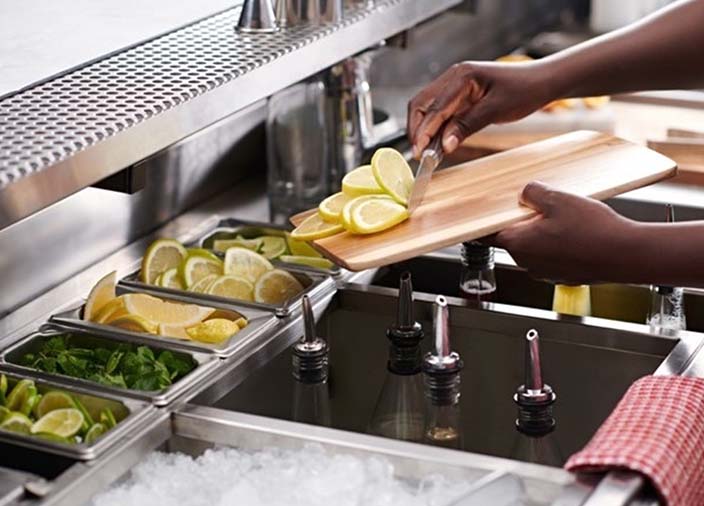
5 Garnish Best Practices
Freshness First: Always use fresh ingredients. A wilted herb or dry citrus can detract from the drink's appeal.
Preparation: Organize and prep your garnishes before service, ensuring they're at hand when crafting each cocktail.
Simplicity: While it might be tempting to create a towering masterpiece, sometimes less is more. A garnish should complement, not overpower, the primary drink.
Safety: When using edible flowers or uncommon garnishes, ensure they're safe for consumption and free from harmful pesticides or chemicals.
Consistency: Especially in professional settings, consistency is key. Every patron should experience the cocktail in the same delightful way.
Watch Video
Key Takeaways
Garnishes are essential as an aesthetic component and add aroma and flavor to cocktails.
Great garnishes complement or enhance a drink rather than just adding visual appeal.
Common styles of garnish include citrus wedges, wheels, or twists; fresh herbs or spices; berries and other fruits; edible flowers; salt, sugar, or spice rims; and other accents such as olives and cocktail onions.
Organize and prepare as much garnish as is practical before the shift to ensure quick, easy service.
Always make sure flowers or other exotic garnishes are edible and safe for consumption.
Garnishing is an aesthetically pleasing and multi-sensory experience in drink-making. The art of cocktail garnishing, from citrus twists to edible flowers, can elevate the drink's appearance, aroma, and flavor and delight your guests with a sensory journey in every sip.
Raise your garnish game with exclusive, free training and resources, and access the latest news and industry insights when you sign up as a Diageo Bar Academy member.
Related Content

Kitchen Meets Bar: Expert Tips on Drinks Pairing and Cooking
The kitchen and bar are more similar than you know. Explore these expert tips to learn how to bring these worlds together for a better guest experience.
Cocktail Workshop: Savor the Flavor
Cocktails are a customer favorite and a simple drink for every occasion. Watch this workshop to learn how to make amazing cocktails using scotch, gin and tequila.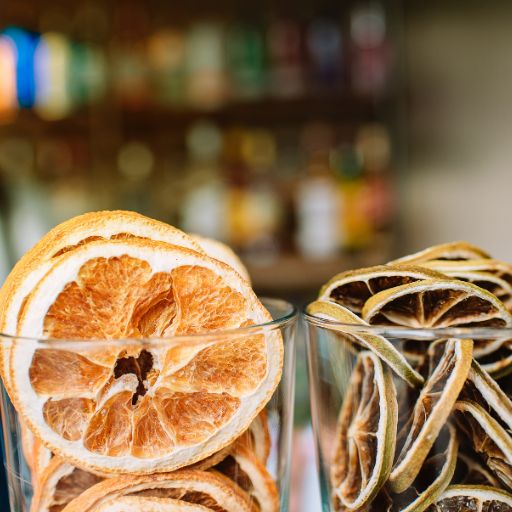
Garnish Dehydration: Elevating Cocktail Presentation
Garnish can add flavor nuances and aesthetics that capture the drinker's attention. Elevate your garnish further using the art of dehydration.
